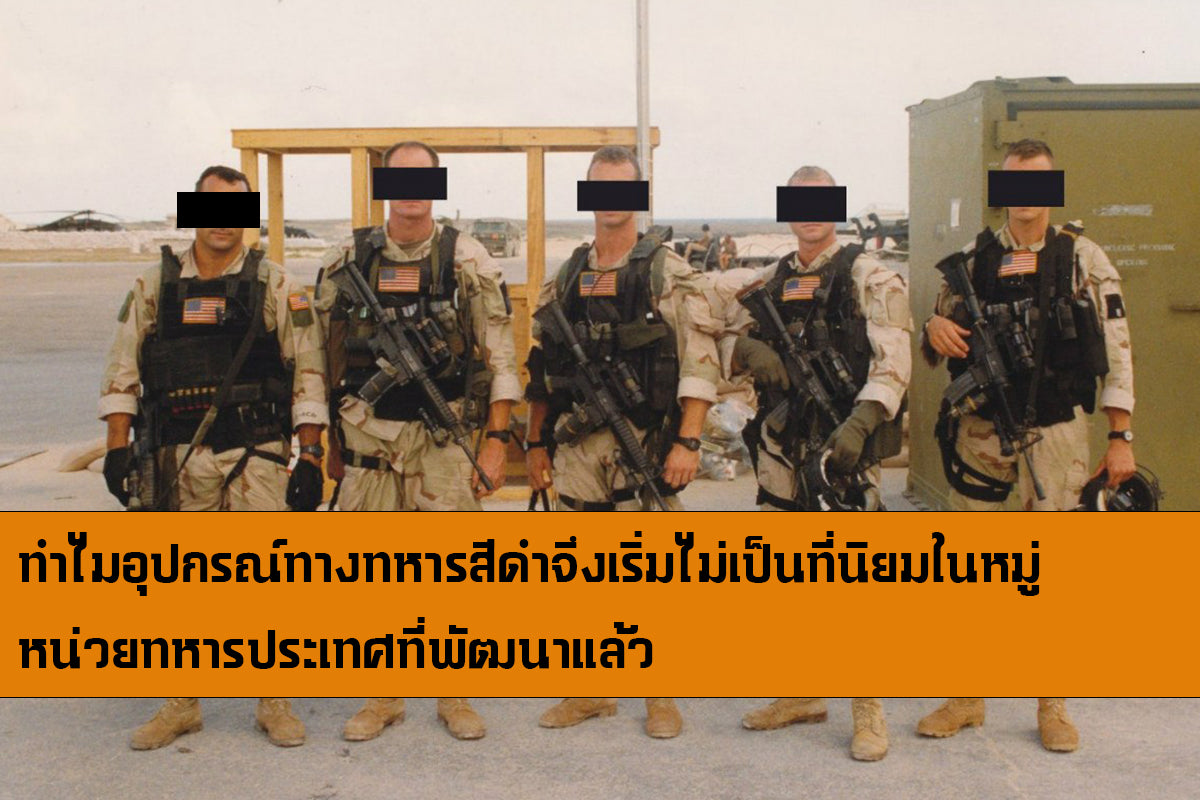In the 1980s, special forces equipment such as armor, holsters and helmets were all black. But why did a color that didn’t match any environment become so popular among special forces? Let’s take a look back at the origins of these black items.
In the 1980s, the choice of military gear in the United States was not as vast as it is today, where there were many small private manufacturers, unlike in the past when most of the equipment was purchased by manufacturers and the government. If it was not an All-Purpose Lightweight Individual Carrying Equipment (ALICE) or a PASGT vest, the user had to choose between good protection but bulky or mobility but no protection. Special Forces soldiers had to look for new options to meet their needs. Waiting for new government contracts can be a long time from design to specification to production. One quick and easy way is to look at existing options, and that is probably the police vest.

SWAT officers in the 80s
The police vest style can be said to meet the needs of special forces officers very well in terms of mobility and good protection. However, the color options are only black or navy blue. Because at that time, the colors that SWAT units in various states often used were only black or navy blue. (In some states, SWAT units also used camouflage patterns such as ERDL or Woodland on their uniforms.) In addition, the tactics of SWAT units at that time focused mainly on night operations. Another reason why there were not many color options was due to production technology and production volume per batch. Because the special forces unit had a small number of people, producing colors that matched the characteristics could be more expensive and undesirable.

Delta Force personnel during the Panama Crisis
For this reason, we have seen US Army Special Forces units wearing black vests and armor ever since. The influence of black equipment continued until the late 1990s. During that time, even though new armor was produced such as PTOA Class-III and TP-1E, it was still black until the beginning of the 2000s when new armor for Special Forces units were produced in green such as Olive Drab (Khaki Green) or Ranger Green.

The alley fight scene from the movie Black Hawk Down.
But what caused the role of black to begin to be reduced in importance? There are several reasons for the departure of black in US military equipment. The first is that black does not provide good camouflage, which is contrary to the needs of the US military, which emphasizes more on camouflage to fit the terrain. The second is better production technology that can obtain the desired color or camouflage pattern. Another factor is that the lifespan of black is shorter than other colors. That is, black tends to fade faster than other colors. And in cases where it is exposed to strong sunlight often, black will gradually turn into a mottled purple instead, which is not suitable for further use. However, many countries still maintain black. If we do not count the principle, the influence of black equipment is probably not far from the influence of various movies. The most obvious example would be the blockbuster movie Black Hawk Down, where we will see special operations units like Delta Force wearing black vests while fighting in a structured area, which is like the new standard for special forces in modern warfare. Therefore, it is not strange that when watching such movies, we will have an image that will be used in real life as well. However, the film was made from an event that happened in 1993, or 29 years ago. Therefore, adapting the dressing style from 29 years ago to the present, where there are more options than before, may be something that needs to be reconsidered.







